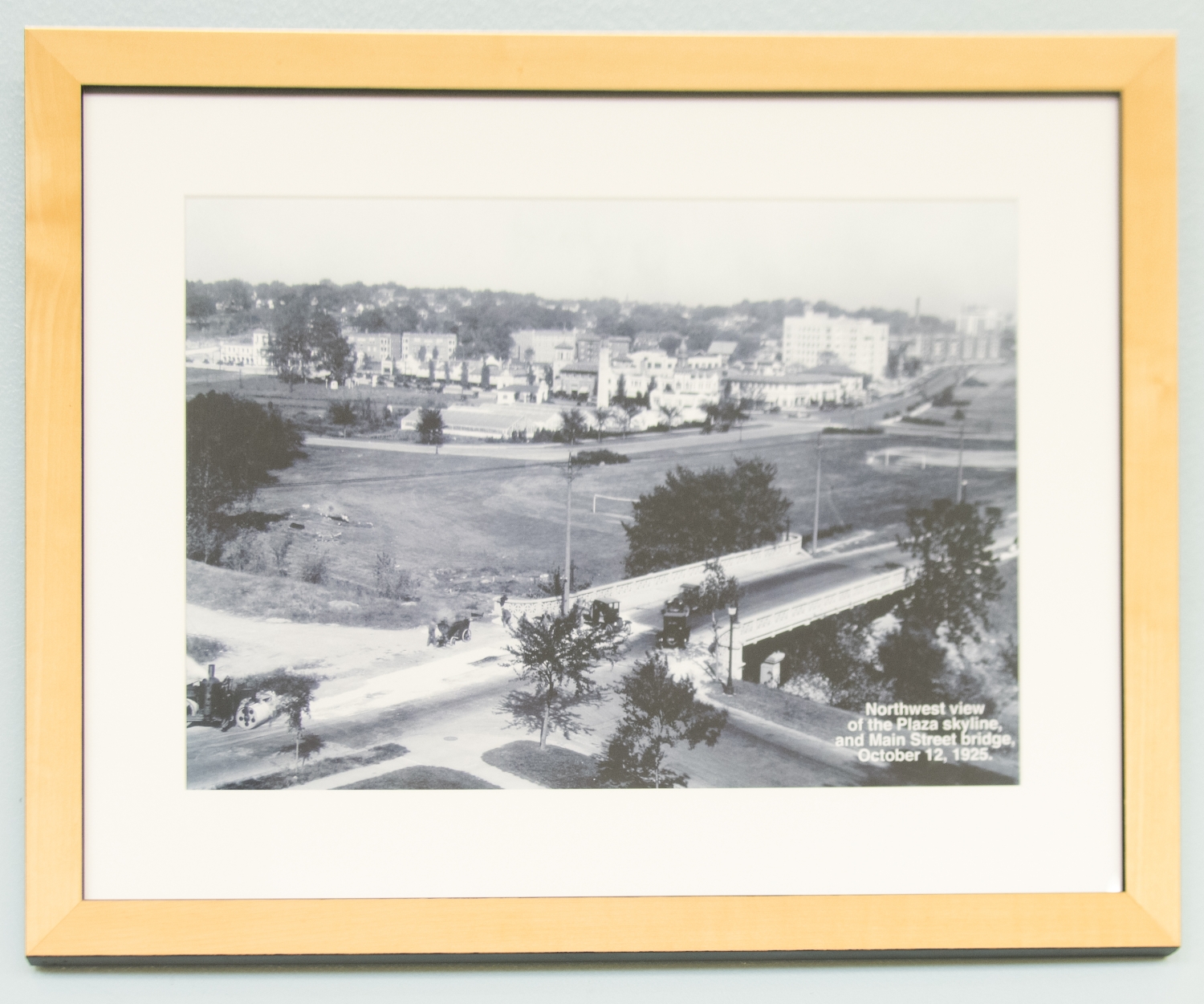Plaza Skyline and Main Street Bridge
Taken from the vantage point, this photograph captures the budding country club plaza district of Kansas City, Missouri. Prominent developer J.C. Nichols designed the plaza with an architectural aesthetic inspired by Seville, Spain, which he visited in the early twenties before opening the plaza in 1923. He built a half-scale replica of Seville’s Giralda tower as a cornerstone of the district, centrally located in the skyline of this photograph. In the foreground belying the tower appears to be open land dotted with sporting nets, and is where the UMKC tennis courts are located now nearly one hundred years later.
One hundred years ago, Kansas City was bypassing prohibition, elevating itself as a national transportation hub, creating and expanding districts, and developing a boulevard system to connect them. In tandem with the development of the Country Club Plaza, Ward Parkway was built to connect the shopping district to the Country Club’s residential district near what is now Loose Park. This thoroughfare made movement and commerce more efficient in the city, which was in the process of doing the same to its local government at the time. In 1924, mayor Albert I. Beach backed a referendum for city manager government that was passed November 3rd, 1925, the month after this shot was taken. The first city manager, Henry F. McElroy, was a notable businessman and known operative for Thomas Pendergast. McElroy facilitated many commercial pursuits in Kansas City, including the expansion of the Country Club Plaza.

